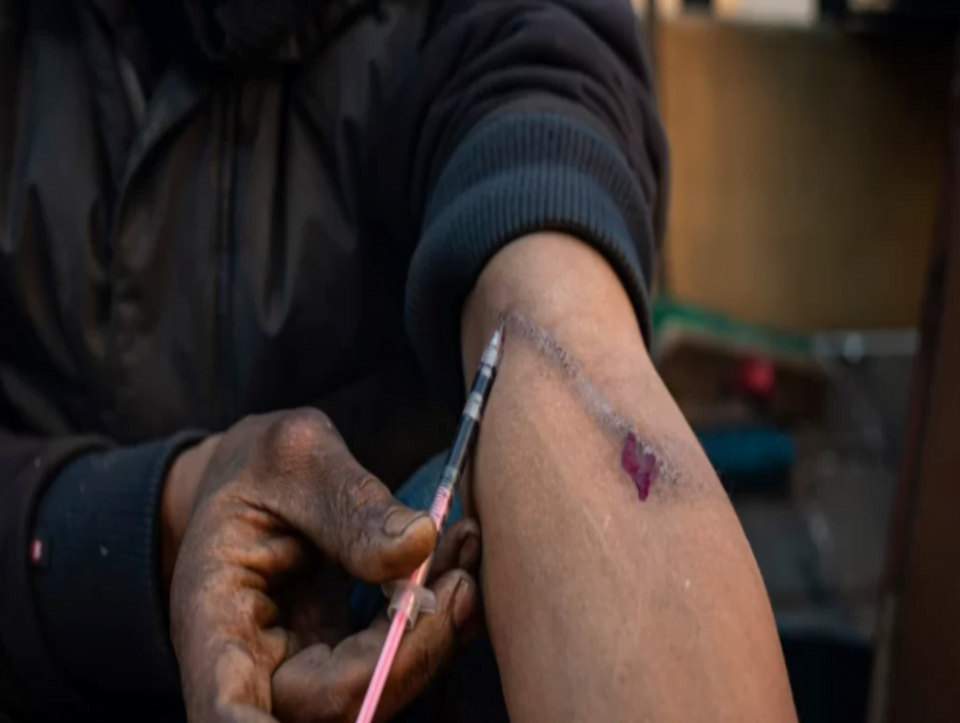Drug or substance abuse has become a major issue throughout the country. Have you ever noticed that wherever you go, there are either drunken street fathers or drunken street hustlers, drunken commuter drivers, or drunken students in uniform? What has our country become? Are we going anywhere, or has a generation already died here? Let me take you on a brief journey to break down how this infectious and dangerous bug has overtaken our community. Those boys and girls on your street bridges, gates, and corners are heavily involved in some disastrous activities, and once they cross the line, returning is a struggle with the state of our health system, which has very limited resources, especially in mental health-related problems. You may pass them without noticing them today, but when you get home and find your own child heavily intoxicated, you will remember this article. (Drug abuse).
Drug abuse has increased significantly in the developing world, with not only an increase in overall drug and alcohol use, but also a staggering increase in the variety of drugs available for consumption. The United Nations predicts a 40% increase in substance abusers in Africa between 2018 and 2030, the largest increase globally. This brings us to Zimbabwe, which is currently experiencing what can only be described as a drug epidemic, with over 60% of all admissions to mental health institutions as a result of drug-related complications, as substance-induced psychosis is one of the most common, particularly among youth, particularly young men.
In Zimbabwe, drug and alcohol-related problems are among the top three problems seen in mental health services. These statistics paint a stark picture of the country’s drug problem, truly justifying its designation as an epidemic, but when you consider the absence of a National monitoring apparatus responsible for monitoring and researching substance use in the country, it suggests that the problem may be much worse than statistics indicate.
It is no exaggeration to say that Covid-19 and the lockdown measures put in place to protect the public have significantly contributed to Zimbabwe’s drug problem, as will be discussed further in the article; however, it is important to note that the drug problem is not a new problem in this country. Prior to the pandemic, Zimbabwe was already experiencing a steady rise in drug-related problems, and while the substances of choice were primarily alcohol and cannabis, there was already evidence of other substances increasingly being consumed, such as codeine-containing medicines like cough syrup and non-medicinal use of psychiatric medications like Diazepam already being abused, with some reporting that they had been abused.
When we look at this drug problem, we must remember that it has been a long time coming. It is also important to remember that, while Covid-19 exacerbated an already poor socioeconomic situation and put pressure on the youth, Zimbabwe already had an emerging drug culture. This drug culture is not only visible now in an apparent willingness among users to consume these illicit substances, particularly in urban areas such as Harare and Bulawayo, but also in universities. Cities such as Bulawayo already had problems such as Vuzu parties, which triggered much anger and concern in the community, even receiving mentions in parliament and major media outlets, leading to multiple anti-Vuzu campaigns. The point being made here is that these new drugs appear to be finding a highly receptive population, with the reason being not only suffering and stress, but also an acceptance attitude amongst young people, a point that is very important to consider, especially when crafting solutions to the problem.
When Covid-19 arrived, it not only elevated Zimbabwe’s drug problem to a full-fledged crisis, but it also gave a face to the epidemic, that of the youth, as the majority of all drug users in the country are predominantly young people, with users as young as 12, a terrible reality to face for our community.
The Covid-19 pandemic resulted in the implementation of lockdown measures, leaving thousands of youth in the country who were mostly unemployed and relied on the informal sector for a living without a means to support themselves and their families, worsening living conditions for them and contributing to the emergence of multiple stress-related problems within the population, as previously highlighted. Many people turned to drugs to dissociate and escape the terrible reality they found themselves in, as well as to soothe themselves, reducing these feelings and alleviating the pressure.
The closure of shops and loss of income caused many of these youths to turn to even more illicit substances on the market, resulting in an increase in the variety of substances consumed by the youth, such as crystal meth or “Guka,” illicit alcoholic brews made from fertilizer or ethanol known as “Njengu,” and other never-before-seen experiments, such as the “muto wema pamper” juice extracted from the boiling of pampers and sanitary pads. The last two new substances to emerge on the country’s drug scene tell a clear story of an otherwise brilliant youth desperate for a high, an escape.
As seen above, we are in the midst of an epidemic, and this epidemic is being exacerbated by the current state of our health system, which is already woefully under-equipped to effectively provide mental health services to the general public for non-substance-related conditions, a trait not unique to the Zimbabwean situation but common to most, if not all, developing countries. This terrible condition, combined with Covid-19 and the country’s emerging drug crisis, is a major source of concern, making it difficult to implement adequate measures to not only prevent drug use but also to provide a curative route for those who have already been affected by it.
The Zimbabwean government has responded by enacting the National Drug Master Plan (2020-2025), which aims to provide a clear way of addressing the drug use problem through a multipronged approach that focuses on security, law enforcement, legislation in supply reduction, awareness and psycho-education, early identification, treatment, and rehabilitation, to name a few. This master plan is a truly great policy that addresses the multi-dimensional aspects of Zimbabwe’s drug problem, but it’s been two years since 2020 and the drug epidemic has continued to grow to crisis levels, destroying communities, and this is largely due to most of the measures that have actually been enacted, which have mostly been legislative, focusing on the criminal or legal aspects of the drug problem.
This raises a problem for the Zimbabwean drug problem because if we only focus on our own “war on drugs,” we may not be able to solve the problem. Instead, one may call for the implementation of other aspects of the Master Plan focusing on awareness and rehabilitation because instituting evidence-based measures for these and increasing access to these in an affordable manner may have the most impact in our context. The Zimbabwean National Master Plan appears to be overly focused on drugs and drugs alone as the problem in Zimbabwe, but as we have learned from other drug epidemics around the world and from numerous drug abuse studies over the years, problems are rarely that simple. This is because the crisis is complex, and the approach appears to be highly focused on stamping out drug use rather than addressing the “why,” why the increase in drug use, why the increase in unemployment and lack of opportunities for the youth as one of the major drivers of the epidemic in the country as youths seek to escape from their problems and soothe or lessen their feelings.
These socioeconomic challenges affecting youth were associated with higher rates of stress, trauma, and mental health issues, all of which increase the risk of drug use. This poses a problem in our context, where poverty is endemic, affecting more than 70% of the country’s population. This means that the majority of the youth are exposed to a large amount of risk factors, making them more likely to use or predisposing them to drug use, which now raises an issue as to the question we should be asking ourselves in terms of addressing the crisis in Zimbabwe, which is “how do we stop the youth in Zimbabwe from using drugs?” This problem is that drug use is an indicator of a societal problem, albeit a maladaptive coping mechanism on the part of the youth, pointing to a problem our communities are facing similar to the crack epidemic of the 1980s in the United States.
In conclusion, the current drug epidemic in Zimbabwe, a crisis of increasing proportions, is a complex problem with various implications for the country, and one might even argue that the solution may be one that sheds light on and acknowledges these broad economic and sociopolitical implications and complexities, as they are critical to addressing the problem. This is because, while the drug problem itself is not unique to the country, the context, the ecology in which it occurs is, and as such, we must address it at all levels using what I call an ecological approach because it is indicative of a crisis in our societies, and treating it as the ultimate problem would be disastrous.
This article was written by Bhekisisa Madololo a Master’s in Counselling Psychology student at Great Zimbabwe University, Zimbabwe. He writes here in his personal capacity. He can be contacted @ [email protected]


